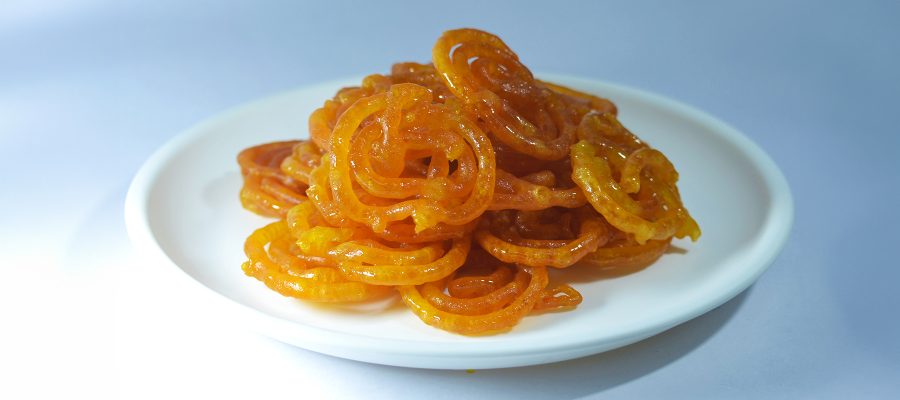Among the diverse array of Indian sweets, few can rival the unique appeal of Jalebi. Its vibrant, golden spirals, crispy exterior, and syrup-soaked interior make it a treat that stands out. Whether it’s sizzling in hot oil at a street stall or gracing the dessert table at a grand wedding banquet, Jalebi’s allure is undeniable.
While Jalebi may seem like a simple creation, its preparation is a testament to the artistry of Indian sweets. The batter, a delicate mix of all-purpose flour and water, is meticulously fermented to achieve the perfect texture. It is then skillfully squeezed into hot oil in its characteristic spirals. The final touch, the fragrant syrup, is a careful balance of sugar, water, cardamom, and sometimes saffron, transforming the crispy batter into a juicy, indulgent delight.
The journey of Jalebi is as fascinating as its taste. This delectable sweet traces its roots back to ancient Persia, where it was known as “Zalabiya” in Arabic and “Zelabia” in Persian. After Persian traders introduced it to India around the 14th century, it quickly made a new home. Over centuries, the Jalebi has seamlessly adapted to various regional traditions, each adding a unique flavour to its rich history.
Regional variations of Jalebi add a delightful twist to its story. It’s often paired with creamy Rabri in Northern India, creating a luxurious contrast of textures and flavours. In Gujarat, it’s commonly enjoyed with Fafda, a crispy chickpea flour snack, especially during the festival of Dussehra. And in Bihar, its thicker, syrupy cousin, the Imarti, holds a special place in local festivities.
Have you ever heard the Indian saying, “You’re as complicated as a jalebi!”? It is a playful nod to the dessert’s elaborate design, representing the many layers of personality and life.

